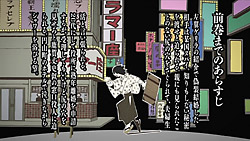 |
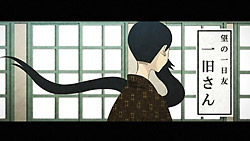 |
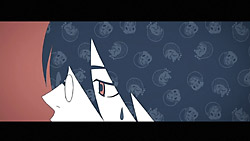 |
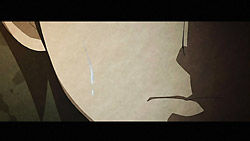 |
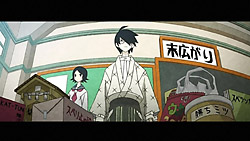 |
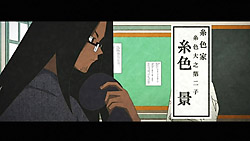 |
 |
 |
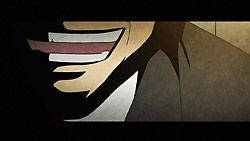 |
 |
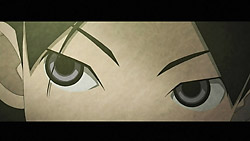 |
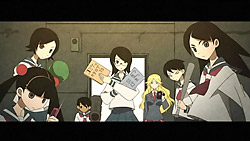 |
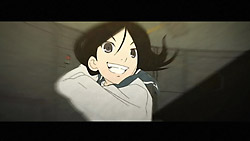 |
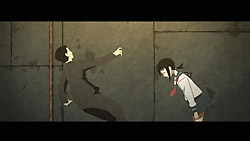 |
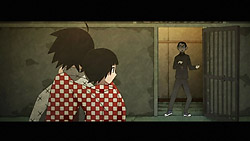 |
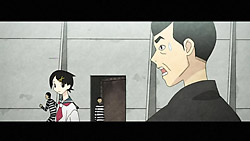 |
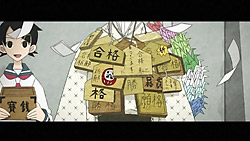 |
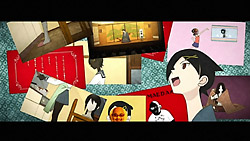 |
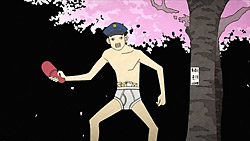 |
 |
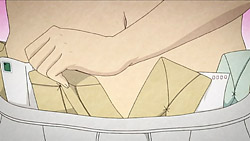 |
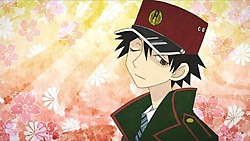 |
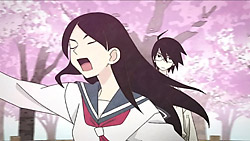 |
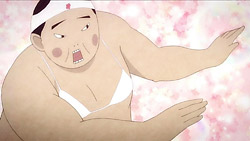 |
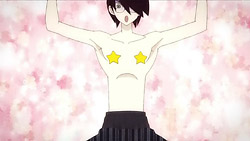 |
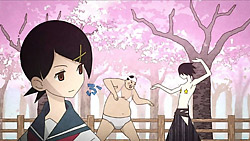 |
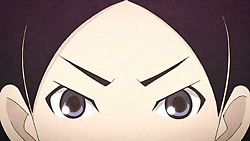 |
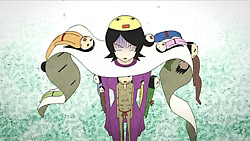 |
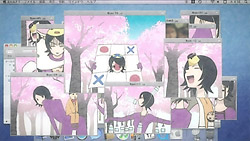 |
 |
 |
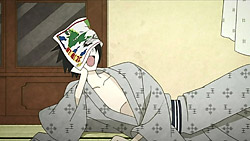 |
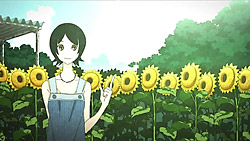 |
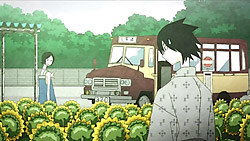 |
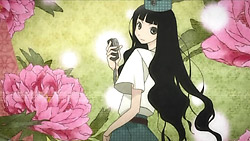 |
 |
Series Introduction
This marks the beginning of the third season of Sayonara Zetsubou Sensei, brought to us by none other than Shaft. I should mention here that I’m a pretty big fan of Shaft, entirely thanks to ZS in past seasons. In fact, the only other series this season that piques my interest to any high degree is Shaft’s Bakemonogatari, and I think Omni is more than happy to blog that show for you in an interesting and timely manner, which I am so not prepared to do. (I will, however, sit back and systematically spoil myself each week by reading ahead in the books.)
I also feel the need to point out a few obvious things in regards to the challenges of doing this type of series. First, usually a third season of an anime series would be difficult for new viewers to pick up anyway, but ZS is particularly difficult because it panders inside jokes to its own fans, and has even poked fun at itself for doing so in past episodes. That makes this especially challenging since the only people interested in reading about it will already be pretty serious fans, who probably don’t need to read a blog to enjoy or understand the show.
Second, the essence of ZS is so very much not to be found remotely near the plot. I could give a detailed summary at great length and it would be meaningless. On top of that, the art is not much to speak of sometimes, despite the fact that Shaft has a very, very capable staff and budget is not really a problem. Any poor animation you find in this show is largely on purpose, and they have a habit of changing animation styles regularly, often several times in a single episode.
So why am I interested in blogging an elitist comedy series with no plot and an erratic animation studio? Because I LOVE it. And I can. But it presents substantial challenges, in that I want to blog it in an interesting way for both myself and, to some extent, the readers, so I spent a lot of time wondering how I should go about doing that.
I’ve decided to keep my summary to a minimum of basic premise to cover the bare essentials of the plot, and really focus a lot of my energy on the use of language. I’m not going to explain the jokes to you, but I’d like to explore a lot of the pet phrases each episode uses to extract a lot of the jokes. As such, preparation for and publication of each episode on my part may take a bit longer than 5 minutes after broadcasting, but I don’t think this is the type of series where people are dying to know what happens next anyway. I hope you will indulge me in this very selfish endeavor. Please tell me your opinions in a decidedly not unhelpful way.
Summary
Our beloved sensei finds himself locked up in jail and we get a quick flashback to find out how he ended up this way. Apparently he’s been incarcerated in an undisclosed location til exams are over because he’s bad luck for students. His own class won’t stand for this though, and comes to his rescue in a variety of characteristically familiar ways that pretty much review and summarize the personalities of most of the cast for the viewer in a quick, insane fashion. Things are wrapped up nicely when Fuura explains that there’s no way Itoshiki sensei could be bad luck for the students. Actually, the truth seems to be quite the opposite.
The next segment showcases a variety of positive and negative (pretty much all negative) signals that ultimately give you the feeling that spring has finally arrived. Several characters share their perspectives until Chiri is forced to admit that perhaps negative harbingers of spring might actually exist – and she’s totally fine with that as long as the proper response is given. What this means for Itoshiki sensei involves star shaped pasties and excellent use of the phrase “flying saucer.” Nami also gets caught in the wave of Chiri’s sadistic perfectionism and winds up with embarrassing photos of her reaction to spring posted all over the internet.
In the last section, Nami disrupts Itoshiki’s depression-inspired lethargy as she embarks on a self-discovery trip to Hokkaido (the Japanese version of backpacking across Europe?). Zetsubou sensei explains that any trip to discover yourself will inevitably turn into a trip that exposes your meager true self instead. While at first he was determined to stay home and not partake in that kind of unnecessary humility, he boards the bus when his sister suggests that he go just to watch other people expose themselves instead. No pun intended. As a bonus, the episode ends with an extra segment of my favorite kid’s show that teaches boys and girls how to draw Zetsubou sensei through a catchy song.
Language
~縁起が悪い~
‘Engi ga warui’ was used an awful lot in the first segment, and basically it is used to express the meaning that something is bad luck. I’ve seen ‘engi’ translated several ways, but a few common ones might be: omen, fate, luck, etc… So, it covers that whole superstitious range of meanings. It isn’t inherently bad, which is why they tacked on the 悪い. 縁起が悪い is different from 縁起の悪い in that the first example is more of a sentence (Subject/Predicate), and the second is an adjective that just means ill-omened or something that is bad luck. So, for example, “絶望先生は縁起が悪い。” and “絶望先生は縁起の悪い名前がある。”
~春の頼り~
‘Haru no tayori’ is used to identify something that, as Fuura puts it, gives you that “Ahh, yep, spring is definitely here” kind of feeling. 頼り means ‘reliance’ or ‘dependence,’ so think of 春の頼り as “the dependability of spring” or something along those lines. It really doesn’t go over so well in English. But it’s something you see that happens inevitably every year, so in a way, you can depend on it to come along with the spring season. It’s not quite the same as a harbinger of spring, but that’s just about the best equivalent I can think of. And as you can see thanks to Chiri, it’s proper to give an appropriate response to the sign of spring, and it is different for each person depending on what makes them feel like spring has arrived. I was unable to get any deep cultural insight from any of my Japanese friends on this subject, but it might be because they are young and just don’t give a crap. Kids these days. Never mind that we’re the same age. Continuing on…
~自分探しの旅~
‘Jibun-sagashi no tabi,’ or ‘a journey to find oneself’ is pretty self-explanatory, but as you can see based on this episode, it’s pretty common and unoriginal to go on a self-exploratory vacation to Hokkaido. By bus no less. But the meat of the joke comes from Itoshiki’s overreaction that a trip to find yourself is nothing more than a trip to expose your true self – 自分さらしのたび. 曝す(さらす) means to expose, so it quite literally is talking about exposure, but not the fun kind. Just the truth.
Well, there you have it. As a full disclaimer, I will say that I am not a native Japanese speaker and have a long way to go to reach that level of fluency, so please don’t rely on anything I write here in a life or death situation. If you see something that could be better translated, or have any thoughtful suggestions, please comment and let me know what you think. Since this is kinda experimental, I don’t mind if comments are in Japanese, either. I hope that by doing this, those who have a vested interest in learning Japanese will find an outlet to discuss something interesting and or new about Japanese language and culture.
PS, I realize that because this is Shaft, the OP and ED will probably change pretty soon, if not weekly, so I’ll get to that later. I like the OP song, not because it’s catchy or I will be able to sing it at karaoke, but because it’s crazy. I like crazy a lot. The OP also shows tons and tons of still shots taken from manga covers and chapter title pages. The ED’s animation is kind of annoying to me personally, probably because it starts out with Nami-chan, but the song is alright I guess.

Wow, it is a hilarious ep. Especially the action parts. :d
For the 1st time after 2 seasons Zetsubou Sensei has a chance to be blogged here in RS. Actually it’s worth the time to be blogged here.
You don’t like Nami? I have very normal feelings toward her
“ZETSUBOUSHTA!!”
The legend is back in action lol.
Great website/blog, just stumbled onto this from Google – looks to be one of the best animeblogs I’ve seen. Great quality all-round, will be making regular visits in the future.
Keep up the good work!
Favorite part was Chiri’s expression with the shovel. It’s the same as Revy in Black Lagoon.
https://randomc.net/image/Zan%20Sayonara/Zan%20Sayonara%20-%2001%20-%20Large%2013.jpg
oh my god.
the legend is back 😀
https://randomc.net/image/Zan%20Sayonara/Zan%20Sayonara%20-%
2001%20-%20Large%2026.jpg
with the most random shit ever XD
This has become such a trippy summer. I agree that the shovel scene was full of win. Thanks Trillian for the JP Language portion, especially considering the source material, that really ads to the interest.
Awesome that Shaft decided to take the challenge and make the third season! As for me, I am a big fan of ” Zetsuboshita!” 🙂
I think that the third season is sure a challenge, but people who have seen first and second seasons, dispise of have they like it or not will watch it. In my opinion, it’s neccessery to watch till the end the anime on which you have already spend a lot of time. But, it’s probably the thought that only organised anime watchers think of.
Finally the Despair is back! Since Totali stopped blogging I didn´t have much hope to see my favorite anime comedy in any other site.
Great job, indeed!
Epic is the only word to describe this series.
Great to see it being blogged here, although like you said, it’s certainly going to be a difficult one to write about.
this show rocks, the entire series rocks, of course though, you really cant remember what happened in the other series, well…except for the best into into a series ever made, which was in the first season, where Zetsubou Sensie was first seen hanging himself in the first minute of the first episode.
This entire series is insane in the good old SHAFT way.
always loved the OP’s from this series, despair rock!!! “the music is awesome too” this must be a hard ass show to sub, what with all the paragraphed jokes and stuff.
definitely smoke bags to this!!
Gracias por postear esta serie. E un poco difícil de entender para los que la empiezan a ver, pero esta es una serie de respeto para los que la hemos seguido desde el principio. Thanks!!!
Yuu-chan’s drawings are as horrible as ever! XD
Thank you Trillian, finally someone at RC is blogging this series. It’s a refreshing break from all the shounen adventure/harem comedy/mystery sci-fi stuff out there.
It’ll be interesting to see how creative Shaft would go this season playing around with things, the epic episode 7 from Season 2 was priceless.
i have a question:
if nozomu = zetsubou = despair, then what does his older brother kei’s name mean? all i got from the subs i have is his name = zekkei but i don’t understand the pun in it :/
the artwork is fantastic, i would have enjoyed it more if its not sooooo RANDOM T^T. another season of zetsubou that i couldnt get past the first episode
Nami has potential don’t hate her pls 🙁
Oh, now you’re blogging SZS 😀
This show covered many things, not only anime-manga but also political issues, I loled at the fat man danced and sang “Aegis! Aegis!” 😀
finally szs is being blogged!!!
Thank you for blogging this anime, becoz it is awesome beyond words.
I love everything that is normal about Nami-chan, including her i-pod (her wish from last season finally came true!). As to my favourite, can’t make up my mind, I really love the entire cast.
Yes! Zan Sayonara Zetsubou Sensei is being blogged here! Thank you so much!
Also, my beloved Ai gets a (head)buttkicking scene!
minoru-run:
Well, the joke on Nozomu’s name has always been that his family name Itoshiki (糸色) is made up of the radicals that make up the “zetsu” (絶) part of the word “zetsubou” (絶望) with the character for “nozomu” (望) making up the “bou” part. So when you squish his name real close together, “Itoshiki Nozomu” (糸色望) turns into “zetsubou” (絶望).
Same thing with his brother Itoshiki Kei (糸色景). Squishing his whole name together get’s you “zekkei” (絶景 = great scenery) which is a pun considering Kei is a snotty artist.
And then there’s Nozomu’s other brother Itoshiki Mikoto (糸色 命), who is a doctor at the private Itoshiki Clinic. When written horizontally his name looks like “zetsumei” (絶命), which means deathly.
Anyone figure out who’s “-TAKE” in the background of https://randomc.net/image/Zan%20Sayonara/Zan%20Sayonara%20-%2001%20-%20Large%2029.jpg ?
Nice language lesson 🙂
SAYONARA!!!!
@trillian: in addition to what you said, i think the “en” in “engi” is the asian word for serendipity (it’s usually used in a positive sense but in this context, most likely not) or like a fated, important bond. I’m not the most reliable source either xD The depth of my knowledge in the language only goes as far as a few terms I’ve learned from watching anime.
@minorun-run: zekkei means beautiful scenery.
@yukina: xD For a sec. I was perplexed, thinking that I already left a reply on this article.